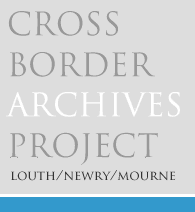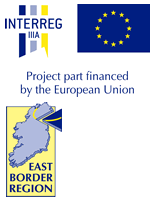Landowners of County Louth
Anglesey
The Anglesey estate in Ireland was originally part of a grant made in 1552 to Sir Nicholas Bagenal, who was also granted land in the lordships of Newry and Mourne. The property descended thought the family until the death of Nicholas Bagenal (great-grandson of Sir Nicholas) in 1712. The Bagenal estates were then divided between two cousins, George Needham and Edward Bayly, with Bayly inheriting the estates at Cooley and Omeath, as well as townlands in Newry and Galway, and the Bagenal property in Wales. Edward Bayly was created a baronet in 1730. His grandson Henry took the surname Paget after succeeding (through his mother Caroline Paget) to the Barony of Paget de Beaudesert and the Paget estates in Staffordshire. He was created Earl of Uxbridge in 1784.
His son Henry William Paget, 2nd Earl of Uxbridge, was created Marquess of Anglesey in 1815 in recognition of the part he played as commander of the British cavalry at the battle of Waterloo. Given his Irish connections and large estate in the Cooley peninsula of county Louth, he twice held the position of lord lieutenant of Ireland. Anglesey became a supporter of Catholic Emancipation when Wellington's Tory government was still firmly opposed to such a measure, which resulted in his Lord Lieutenantship being brought to an end in 1829. His second viceroyalty, 1830-1833, was preoccupied with the Irish component of the Great Reform Bill/Act, agitation for Repeal of the Union, anti-tithe disturbances, tithe reform, an inter-related reduction in and possible diversion of the financial resources of the Church of Ireland, the introduction into Ireland of lord lieutenancies and deputy-lieutenancies of counties, the demands for patronage which this reform and other events (such as vacancies in the Irish representative peerage) engendered. Anglesey's advanced views, sharpened by what he regarded as the injustice done him in 1829 and by association with Irishmen of fairly extreme opinions (notably Valentine Lawless, 2nd Lord Cloncurry, who had been in United Irishman in his youth), brought him into frequent collision, not only with many of the 'Ascendancy' politicians and political families in Ireland, but also sometimes with the Whig government, particularly the Home Secretary, the 2nd Viscount Melbourne.1
Due to Anglesey's political and military commitments, as well as the existence of much larger estates in Wales and Staffordshire, he spent relatively little time in Ireland outside of his two periods as Lord Lieutenant. Anglesey was kept informed of the affairs of his Irish estate by Colonel W. Armstrong up to 1840, and then A.W. Rutherford from 1841. In the aftermath of the Famine Rutherford was forced to defend Anglesey's reputation as a landlord in a letter to the Dundalk Democrat, where he highlighted the 20% abatement in rent given to the tenants, rent arrears of £900 written off, assistance given to those who wished to emigrate, and money for food and local improvements.2 There is evidence that Anglesey may have been in favour of agricultural reforms on his estate in the pre-Famine period, but given the heavy unemployment, overpopulation, and spade-labour economy, such reforms would probably have sparked agrarian unrest.
The Irish portion of the Anglesey estates had become a financial burden by the 1840s, but such was Anglesey's attachment to his Irish estates that he retained ownership until his death in 1854. His son, Henry 2nd Marquess of Anglesey sold the Irish estate (of 11,150 statute acres) in 1857-8. St. Clair K. Mulholland of Hillsborough, county Down was the principal purchaser, acquiring 4,253 acres.3
The Anglesey papers are held by the Public Record Office for Northern Ireland, see www.proni.gov.uk, or click here to view the PRONI introduction to the collection (pdf file).
Footnotes:
1. Public Record Office Northern Ireland, Anglesey papers (view pdf on www.proni.gov.uk)
2. Dundalk Democrat, 19 January 1850
3. Harold O'Sullivan "The Parishes of the Barony of Cooley (Part Three)", publication forthcoming in Seanchas Ardhmacha
- home |
- about project |
- online catalogue |
- online exhibitions |
- activities |
- oral history collection
- about us |
- contact us |
- legal |
- acknowledgements
© Cross Border Archives Project . Website design and development by morsolutions.
This project is part financed by the European Union through the Interreg IIIA Programme managed for the Special EU Programmes Body by the East Border Region Interreg IIIA Partnership.




